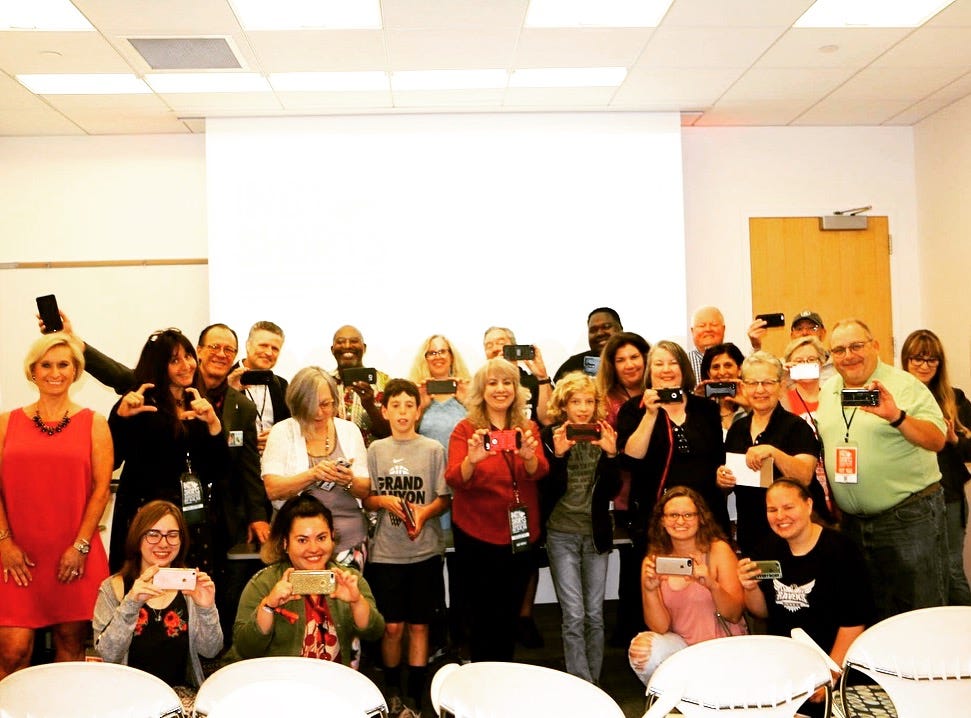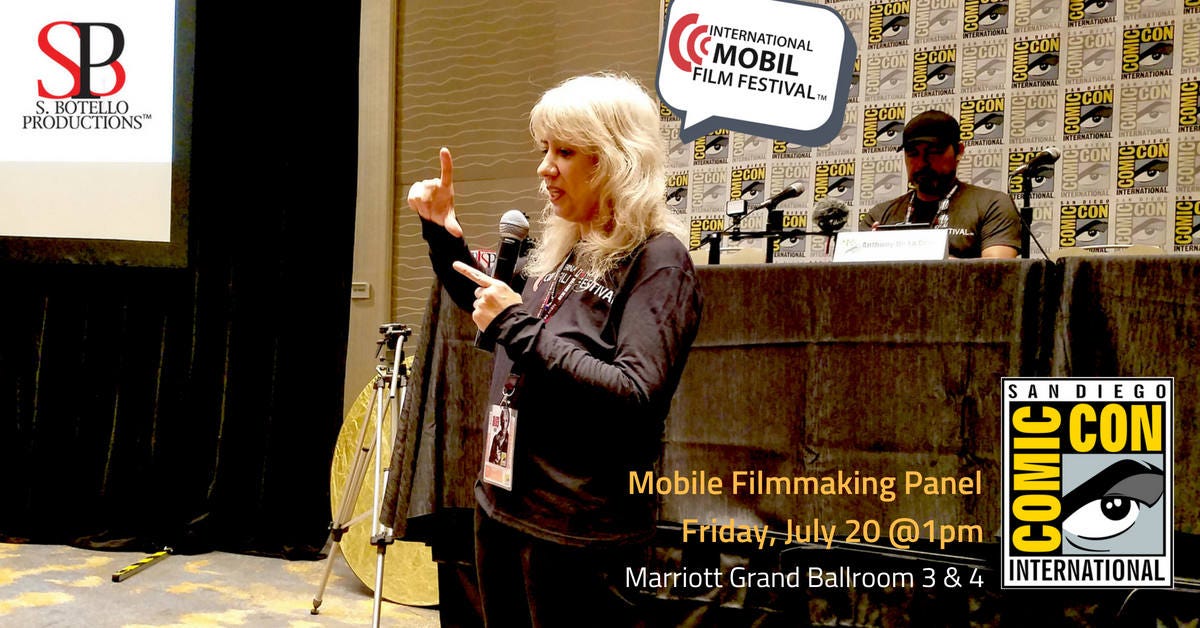When I presented mobile filmmaking during Comic-Con in San Diego I brought attendees a very entertaining experience.
In 2019, I spent the last day at Comic-Con putting my words into practice by “walking the talk.” I shot video using my smartphone camera, without apps. I also shot many photos throughout the entire event, and included some in my finished video. I used my shotgun mic to capture sound bites from attendees and cosplayers. Oh, and the music I used in my video (watch the video in this story) was composed by me, using Garageband on a Mac.
My background as a pioneer with the first film festival in the world to create a traditional in-person international film festival for only films shot with mobile phones for the big screen gave me an advantage as a presenter.
But what makes any video entertaining has a lot more to do with gear. Gear are the tools you use to capture your story. How you put things together and the quality of what you capture has more to do with intimacy.
My last story in this publication speaks to more on why that is a real concept.
You can go to a presentation by a traditional video producer to learn about mobile filmmaking, and the information they share is what you can research on your own. The apps, the gear, maybe some advice on frame rates and log capture…wait what? That’s right. Stuff that before you even start practicing and making short films, will only distract you and bring you down a rabbit hole. A place you don’t need to go to just to get started making videos and short films.
In my presentations at SDCC, and other places like IndyShorts in Indianapolis, I shared the most important things to know and did not try to sell products. What I did, was entertain and respect everyone attending as a storyteller. Not as a guru who you are going to learn from. But much more as a guide who would help you realize you know how to turn a story into a film already, just didn’t realize it.


A lot of video producers cannot help but go into technical schematics of settings and what they mean on a professional camera. I worked in video production many years and even wrote manuals for interns to run our company cameras. When you are explaining to them about zebra stripes, audio settings for the mic in kHz, frame rates, white balance—they began to feel weighed down into the technicalities that distracted them from capturing good footage.
All the settings are correct…but your footage is not so good at all. And yes, practice again and again. But each time you practice, again, you begin with the setup process. And that is the conundrum of professional cameras, even prosumer cameras. Because you’ve set up so much that by the time you move to another room or location, go back inside from outside, anytime something changes, you have to be mindful of your settings…and reset some of them.
When you have a smartphone camera, learning how to work one for basic videos and short films is not as hard as most professional video producers will tell you.
What I emphasize in my presentations is that I want to help you realize what you didn’t know you knew, and motivate you to feel inspired to do it.
You may have a lot of questions, but what is most helpful is to just pull out your phone, turn the screen so it records horizontally (it plays better on a larger widescreen), and hit that record button. Now, when it comes to getting good audio, listen to a very basic and informational episode 120 of my podcast with Julian Bate-Vergette.
I talk to many people making really good, award-winning feature and short films.
I’ve been involved with mobile filmmaking over 15 years now, since launching the International Mobile Film Festival in San Diego in early 2009. One thing I hear a lot from indie pros and inexperienced filmmakers is how surprised they were at the quality of what they captured without any setup. If you’ve watched films and videos, you know what “good” looks like.
In a world filled with YouTube tutorials, what you want to gain from attending an in-person presentation (or online) is inspiration, and the confidence you need to get started. You are not going to learn all the details and buttons, settings, frame rates, audio, apps, gear…it’s just not going to stick with you in a way you can put it to good use. Not in a one hour presentation.
The result of attending a valuable presentation is that you’ll realize that it’s not about what the presenter knows, but about how well they lift you up from the noise of making films with smartphones to inspire you to actually get started.
In my presentations, people gathered around me afterwards, outside the room asking about more presentations from me, the festival criteria, contact information…and some of them were lit up and smiling and told me how much they enjoyed the presentation and how inspired they were.
What I found out later, was that some of the people who attended my presentations were so inspired that they made short films and wanted to show them to me. So they submitted them into our film festival in San Diego!









Share this post